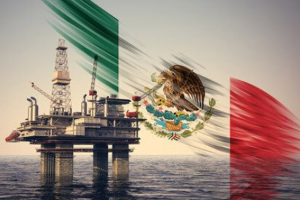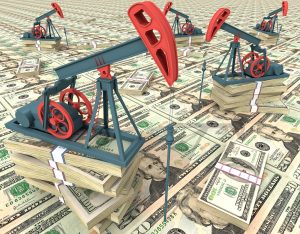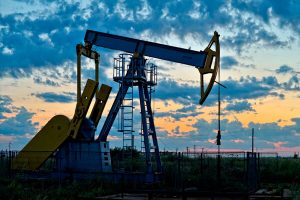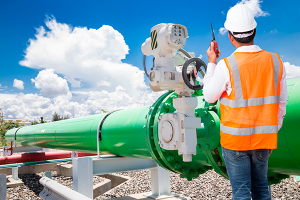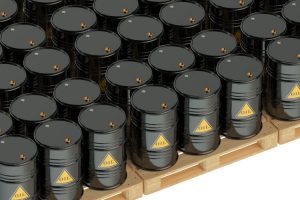Baystreet Staff / May 22
It may have taken the better part of a century, but Mexico figured out that their state-owned energy monopoly, PEMEX, was a business model that just wasn’t working out. After hammering out legislation in 2013 to denationalize the nation’s oil and gas industry, the worst thing that could happen, did; oil prices collapsed, and companies globally hit the brakes on spending. What was expected to be the opening of floodgates to invest in arguably the biggest energy opportunity today didn’t happen quite as expected. With oil prices climbing to fresh three-and-a-half year highs, all that is changing and the Mexico’s oil space is starting to heat up with investment of $150 billion now secured.
As it happens, investors’ conservative approach worked perfectly in favor of Steve Hanson and his team at International Frontier Resources Corp. (TSX-V: IFR) . “We knew that we were heading to Mexico for the first onshore licensing round to build the cornerstones of our operations,” Hanson said in a phone call with Baystreet.ca. “We were in a strong financial position with a clear mission to become the next energy leader in Mexico. Others staying on the sidelines as oil bottomed in 2016 really worked to our benefit as a first-mover in Mexico’s energy reform.”
The savvy leadership at IFR, formed an equal partnership with a Mexican petrochemical giant, as a result, this Canadian company became the first foreign-owned joint venture (JV) and independent oil company to actively explore onshore opportunities in Mexico in over 80 years. Through its strategic JV, IFR is also the first foreign company to complete the regulatory review and drill onshore conventional oil in Mexico under license contract. You’d think it would have been a major like Halliburton (NYSE: HAL) or Baker Hughes (NYSE: BHGE) or Schlumberger (NYSE: SLB), companies that were already working in the area as service providers to PEMEX, but it wasn’t. It was a little $30 million market cap. company that was nimble enough to beat everyone to the punch.
“We weren’t afraid of the price of oil. Not even at the $40 per barrel that oil was fetching at the time; we knew we could still make money based on our expertise and interpretation of the geology,” said Hanson. “At $70 oil, we’re obviously excited with our position, ” he added.
Confident for Good Reason
Hanson’s confidence isn’t unfounded. He has over two decades of well-grounded experience in finance and corporate development, serving as chairman and managing director at the award-winning equity money management firm Van Arbor Asset Management before selling it with a sizable payout to the ZLC Private Investment Management in 2008. Next he was the CEO and president of PanAsian Petroleum that was sold profitably to Ivanhoe Energy, shortly after Hanson took charge. Likewise, that was followed by serving as a director at Lion Petroleum, a company focused on oil and gas in East Africa which was then acquired by Taipan Resources.
IFR’s management team is the embodiment of success and has experience across the finance and energy spectrum throughout the globe, including COO and director Andy Fisher, who has a history of taking companies with negligible assets to robust oil and gas production. For instance, he founded Arcan Resources and grew it from no production to 4,000 barrels of oil equivalent per day (boe/d), before the company was sold to Aspenleaf Energy Ltd., in June 2015 for CDN. $300 million. He was also VP, international contracts and negotiation, at Pacalta Resources Ltd. (“Pacalta”) in Ecuador, where he helped in growing the company from 100 boe/d in production to roughly 45,000 boe/d. In 1999, Alberta Energy Co., the predecessor to EnCana’s (TSX: ECA) (NYSE: ECA), bought Pacalta in a deal worth approximately CDN. $1.0 billion!
For the sake of brevity, the profiles of everyone contributing to IFR’s future can’t be covered; however, it certainly is worth mentioning that Colin Mills, an independent director at IFR, has more than three decades of diverse international experience in power generation, including building two power plants in Mexico, which adds to the local advantage of IFR in terms of navigating the regulatory environment in Mexico.
The commitment and confidence of these individuals to IFR is best recognized based on the fact that insiders hold more than one-third of the company’s outstanding shares.
It’s this experience and dedication at IFR that led to the formation of Tonalli Energia, a 50-50 JV between IFR’s Mexican subsidiary, Petro Frontera S.A.P.I de CV, and Mexican petrochemical giant Grupo IDESA. As a first mover, the partnership and its in-country experience gives Tonalli a serious competitive edge to catapult it forward into becoming the next energy leader in Mexico.
The Tecolutla Project – Now a Producer!
Imagine every bit of oil in Texas was controlled by one company for the last 80 years. That’s a rough analogy for what has been going on in Mexico. It’s explored enough (both on- and offshore) to know that there are tremendous reserves, possibly comparable to the all-resilient Permian Basin, but woefully little with respect to extracting oil and gas. Right now, Mexico ranks as the Western hemisphere’s third largest oil producer and host of the fourth largest known oil reserves.
Those could be conservative positions in the future considering Premier Oil last summer made a major offshore discovery in a block next to Talos Energy and Sierra Oil and Gas that is estimated to hold in excess of one billion barrels of oil that possibly extend into the adjacent block. This was discovered through the first shallow water offshore exploration well drilled since denationalization. Shares of Premier rocketed higher with the find. “Few think of Mexico in the same terms as Saudi Arabia, despite the fact that Mexico has similar quantities of hydrocarbon resources,” argued a recent report published by Manhattan Institute for Policy Research. However, this is about to change with higher oil prices and growing investor interest.
Lending further credence to Mexican oil potential, IHS Markit thinks the country’s untapped Tampico-Misantla Basin on the east coast of Mexico could be one of the world’s next “super basins.” Part of the basin includes the massive Poza Rica oil field, estimated to contain 3.8 billion boe, and IFR’s Tecolutla project which has now commenced completion operations for its recently drilled TEC-10 well.
The Tampico basin is known to have geology similar to the prolific North American basins, with stacked conventional and unconventional pay zones. In fact, IFR recently drilled 138 meters of reef thickness at its directional evaluation, TEC-10 well. It is also known that such basins tend to have “halo” zones of tight oil (light oil that is easily produced) surrounding them, this may be supported by the limited amount of exploration that has so far occurred at Tecolutla.
Seven wells were drilled between 1956-1972, with a well with last recorded production rates in January 2016. IFR announced the completion of a successful workover of a legacy TEC-2 well which was tested for production for a total of seven days and far exceeded management expectations. The well reported an average flow of 125 barrels of oil per day which was more than 13 times higher compared to last recorded production on the well! Newly drilled TEC-10 is next to test for production rates which is the most exciting moment for IFR JV since its inception!
IFR was awarded the block in May 2016 with no cash payment, merely a royalty agreement which offered one of the most favourable terms in comparison to the royalties on other blocks offered during the bid round. Furthermore, Export Development Canada (EDC) backstopped IFR by putting up the company’s portion of the performance bond required by Tonalli, allowing the company to conserve its cash, while lending a great deal of validation to the project. IFR ended the first quarter of 2018 with $2.81 million in cash and cash equivalents and no debt.
The first drill rig penetrated the ground in April, reached depth of 2,453 meters total vertical depth and was cased for production testing this month which was a historic moment for the Mexican oil and gas sector. Several points stand out when looking at the disclosed results, namely the fact that visible oil was noticeable from the core and the fact that oil was hit at deeper levels than oil was ever produced in the zone historically, indicating the El Abra reservoir at Tecolutla could have greater volume than ever believed.
Moreover, IFR, via Tonalli, is using modern exploration technology at Tecolutla for the first time. IFR is using the first-ever 3D seismic data shot for the whopping 81-billion-barrel Chicontepec formation with the aim of helping better understand Tecolutla field.
The beauty of the rock, according to Hanson, is not just that it is apparently flush with oil, but naturally fractured as well, making horizontal drilling easy, without the need for fracturing that draw the ire of environmentalists. These characteristics mean that the drilling is low cost, to the extent that Hanson believes the company can produce profitably at a cost of less than $20-$25 per barrel.
The Upcoming Catalysts
IFR is presently working on production testing, continuing analysis of the wireline, image logs and core analysis, refining the 3D seismic model and identifying the next drill target. The JV is looking ahead to the second tender of Round Three of bidding for projects (scheduled for September 27, 2018). Given the surge in value that Premier Oil experienced with its find, any positive data regarding the initial drill hole underpinned by historic production, should energize IFR shares and likely drive the attention of the investment community.
“We started IFR and moved aggressively in Mexico with the purpose of building a billion-dollar company,” Hanson added during the call. He continued, “We are very proud of being a first-mover in what we believe is going to quickly emerge as one of the most vibrant energy markets in the world and we’re not going to relent in our efforts to build value just as we have with previous companies.”
It’s difficult to disagree with anything Hanson says. They have nailed all of their milestones so far and certainly have plenty of running room to add to their portfolio. They have an outstanding partner in Grupo IDESA, the backing of EDC, are fully-funded for the existing work program, all the necessary infrastructure is in place, and they have outstanding experience across the entire supply chain that should allow IFR to sell oil at a price that couldn’t be realized anywhere else in the Western hemisphere.
Now, if they just start to prove the oil and the economic viability of the resource as they believe, IFR should be off to the races as the company looks to notch the next major success in their already impressive accomplishments.
Disclaimer: Nothing in this article should be considered as personalized financial advice. We are not licensed under securities laws to address your particular financial situation. No communication by our employees to you should be deemed as personalized financial advice. Please consult a licensed financial advisor before making any investment decision. This is a paid advertisement and is neither an offer nor recommendation to buy or sell any security. We hold no investment licenses and are thus neither licensed nor qualified to provide investment advice. The content in this article is not provided to any individual with a view toward their individual circumstances. Baystreet.ca has been paid a fee of four thousand dollars for International Frontier Resources Corp. advertising. This compensation constitutes a conflict of interest as to our ability to remain objective in our communication regarding the profiled company. Because of this conflict, individuals are strongly encouraged to not use this article as the basis for any investment decision. While all information is believed to be reliable, it is not guaranteed by us to be accurate. Individuals should assume that all information contained in this article is not trustworthy unless verified by their own independent research. Also, because events and circumstances frequently do not occur as expected, there will likely be differences between any predictions and actual results. Always consult a licensed investment professional before making any investment decision. Be extremely careful, investing in securities carries a high degree of risk; you may likely lose some or all of the investment.
Baystreet Staff / May 22
